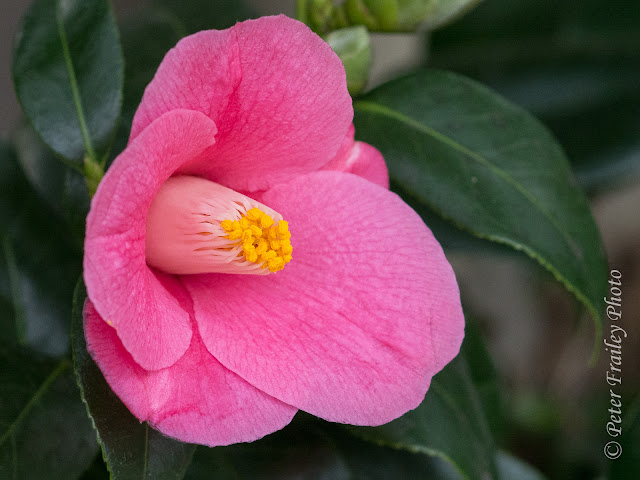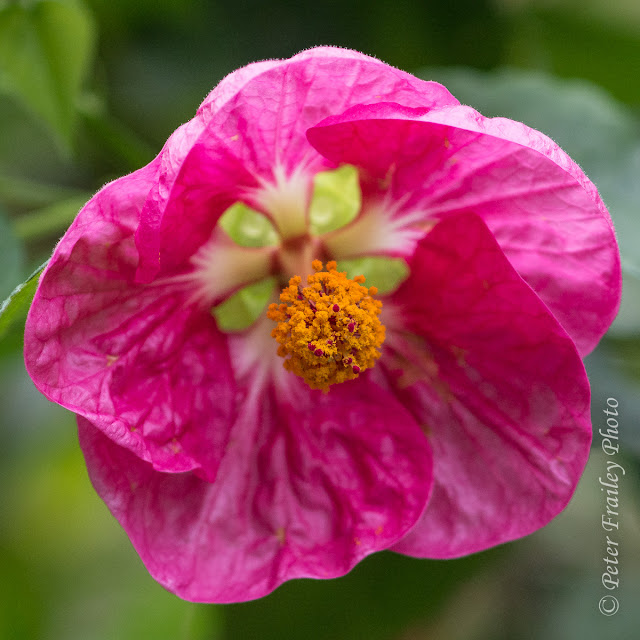Two posts ago (
here) I showed a few samples of macro flower shots taken at our nearby botanic garden using the Sony NEX-6 camera body plus a very old Nikon lens, the Ai-S version of the Nikkor 105mm F2.8. Today I am posting what I believe are equally sharp macro images using the same lens on an Olympus E-M5.
Like all the mirrorless models, both cameras can accommodate old lenses as long as the appropriate lens adapter is attached between the camera body and lens. There are no electronics connections, so aperture must be adjusted on the barrel of the old lens and manual focus is required.
Reviews of the performance of old lenses originally designed for film cameras show that there are great variations in image quality depending on model, brand and/or focal length. But I have been very happy with this old Nikkor Ai-S model 105mm F2.8. (If you are interested, I see they sell for about $350 on eBay.)
On a full frame Nikon this lens is a 1:2 macro, but on a m43 camera with its 1/2 size sensor (half the diagonal of a FF camera) you get a 1:1 macro.
I've been recently comparing the image quality of this old lens on the Sony NEX-6 and the Olympus E-M5. There are differences in how the Olympus and Sony handle the old lenses. A primary benefit of the Sony is what is called "focus peaking". As you bring a subject into focus, areas in focus turn yellow along lines of high contrast (you can also select red or, I think, white). Unfortunately this works inconsistently with macro shooting.
One advantage of the Olympus is that there exists in-body image stabilization. This results in stabilizing even old legacy lenses like this old Nikkor. On the other hand, when shooting flowers outdoors (perhaps my primary use for a macro lens) I like to use a shutter speed of about 1/160 to 1/250 because even in a windless day there is air movement that can create slight amounts of subject motion. At these speeds, using a 105mm lens (with an effective reach of 160mm on the Sony and 210mm on the Olympus) I can hand-hold the camera without noticeable camera shake, without needing image stabilization.
So, perhaps the main benefits of each system (focus peaking on the Sony, and in-body stabilization on the Olympus) aren't that significant (to me) when using this lens.
There are other differences in operation which I expect to elaborate on in a future post; but first I need to shoot with both cameras and this one lens a few more times.
As you can see below, the results from this old-technology lens on a new-technology camera are very nice. Perhaps new lenses are sharper (though nothing is currently available for Sony E-mount and Oly/Pany m43), but I doubt I would notice the difference at a normal viewing distances. What I can say about the pictures below is that they are sharp enough me.
These were all processed in Lightroom 4, from RAW files.
[Click on the images to see a larger image, up to 1600 x 1200 pixels depending on your monitor size and resolution.]
 |
I focused on the yellow stamen tips. Any blur is a depth of field issue,
even though I shot at F8. Shutter = 1/200. ISO = 2000. |
 |
I think I was focusing on the center of this flower (i.e. the brown stamens). Most likely shot at F8.
Shutter speed = 1/200. ISO = 2500. |
 |
Focus was on the red stamen tips, and they are sharp. But likely I was using wider aperture like F5.6 or F4 than I
was using on the prior two images. Shutter = 1/200. ISO = 1250. |
















